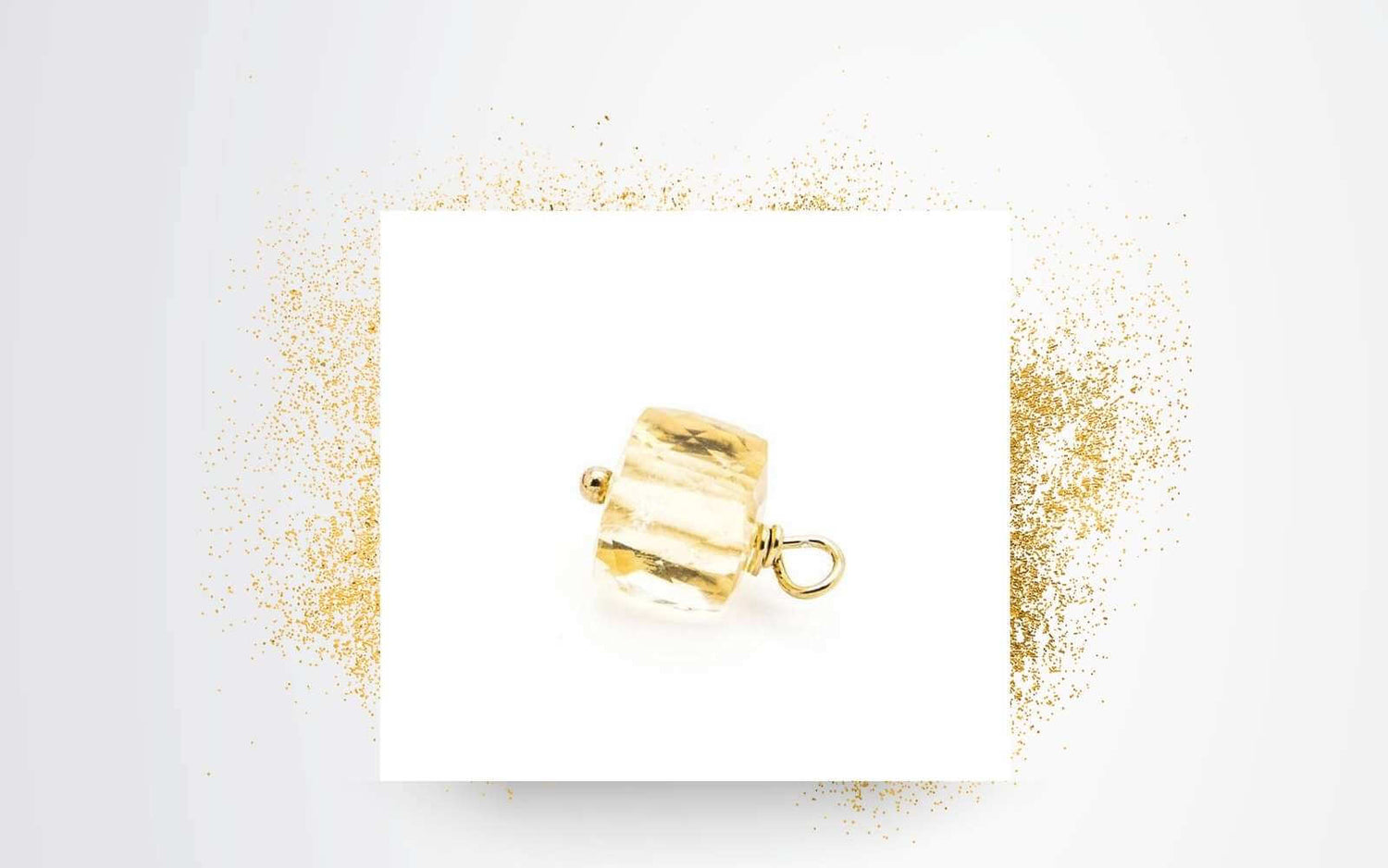
November Birthstone - Rays of Sunshine in Citrine
Citrine November Birthstone
Citrine with its sunny colours is a dazzling and brilliant gemstone that energises and promotes the well-being of anyone who wears it. November babies are lucky to have such an uplifting gemstone for their birthstone. The November birthstone offers good luck and fortune to the wearer. It is called The Success Stone as it has been associated with prosperity and abundance since ancient times.
November Birthstone Colour
Citrine is a transparent, yellow variety of Quartz used in jewellery for thousands of years. The November birthstone ranges in colour from pale to golden yellow, honey or almost brown. It may contain rainbow or sparkle inclusions. Citrine’s yellow hues are caused by traces of iron in quartz crystals. Most natural Citrine has a pale yellow colour. The finest colours are saturated with little or no brownish components and range from yellow to reddish-orange.
Natural Citrine is rare and most of it on the market is heat-treated amethyst or smoky quartz. With its availability in a broad range of sizes, durability and affordability the November birthstone is one of the best-selling and desired yellow gemstones.
Citrine Treatment
Citrine’s heat treatment is accepted within the gemstone trade and is usually done at mines. Amethyst and smoky quartz are mostly used. Heat-treated smoky quartz produces light to medium yellows. Amethyst gives stronger yellow and orange to red shades. The amethyst’s original hue can determine the richness of the resulting yellow of the Citrine gemstone.
Citrine Name Origin
The name of this golden gemstone relates to the French word citron, meaning lemon. The name “Citrine” was first recorded in English as early as 1385.
Hardness and Deposits of Citrine
Citrine has good toughness and is durable enough for normal jewellery wear and care. It rates 7 out of 10 on the Mohs scale of hardness. Citrine, like most quartz crystals, is available in large sizes which makes it versatile for jewellery use and design.
The top sources of this November birthstone are; Brazil, Bolivia, Spain, Madagascar, Mexico and Uruguay. Natural untreated Citrine is quite rare. Bolivia’s Anahí mine is an important source of it. The mine was discovered by a Spanish conquistador in the 1600s. The colour of Citrine from the mine typically ranges from orange-yellow to brownish-green yellow. The mine is also well-known for its ametrine which is a combination of amethyst and Citrine in the same crystal showcasing both colours together.
Difference between Topaz and Citrine
Throughout history, all gemstones in the brown, orange and yellow colour range were called topaz. The gemstones were mistaken until the 1930s when modern gemology was recognised as a science and their differences were officially established. Citrine and topaz look similar but they are unrelated minerals. They are composed of different chemicals and have different physical and optical properties. They are also valued very differently. Citrine is more common and less valuable than topaz which makes it a more widespread and affordable choice for jewellery. Topaz occurs in a wider spectrum of colours than the yellow range of Citrine.
November Birthstone Meaning
Citrine is known as the “Healing Quartz”. November birthstone is said to support vitality and health while encouraging and guiding hope, energy and warmth within the wearer. Carrying the power of the sun, it is warm, comforting, energising and life-giving. It is most known as the gemstone of abundance and manifestation, attracting wealth, prosperity and success. It is said to have the ability to overcome negativity with positive energy, protect against harm, ease quarrels, and bring healing.
History of November Birthstone
In ancient times, people believed that the November birthstone could calm tempers, soothe anger and manifest desires, especially prosperity. Egyptians used Citrine as talismans to benefit from its powers. The ancient Greeks carved iconic images into it and Roman priests used Citrine in rings. It was called the Merchant’s Stone as its colour was associated with gold. It is for that reason known to this day as the stone of success and prosperity. The November birthstone’s colour is very similar to topaz and the two gemstones share a history of mistaken characteristics. 17th-century Scottish men used Citrine on the handles of daggers and swords for decorative purposes. Citrine was very fashionable in Hollywood during the Art Deco era between the two World Wars. Movie stars like Greta Garbo and Joan Crawford wore glamorous, oversized and elaborate Citrine jewellery pieces.
Caring for Citrine Jewellery
Citrine rates 7 out of 10 on the Mohs scale of hardness with good toughness making your November birthstone durable enough for normal wear and care. However, Citrine jewellery should be protected from sharp blows and scratches and stored carefully when not worn. Store it separately from harder gemstones to avoid abrasions, scratches and chipping. It can be safely cleaned with warm soapy water and a soft brush. Make sure to rinse and dry your jewellery thoroughly after cleaning. Heat-treated Citrine may fade when exposed to heat and proper care should be taken.
How to Wear Citrine Jewellery
The warm yellow and light brown hues of Citrine are perfectly complemented by gold and are a perfect match for the autumn season. The November birthstone could easily be considered a go-with-anything gemstone. The golden tones of Citrine brilliantly match neutral colours giving your outfit a pop of colour. If you are shy of vibrant colours Citrine jewellery could be a good choice to brighten up your outfit in a subtle way. It especially well creates a striking and elegant look when combined with black. For those in favour of stronger colours and greater contrast, match your November birthstone jewellery with cool colours such as blues and purples. These colours are opposite to yellow on the colour wheel creating a strong and remarkable contrast. Wear Citrine to give your outfit the touch it needs to make you look and feel amazing.
Discover what birthstones you can wear for other months in our "Birthstones by the Month" blog post.
References:

